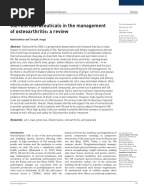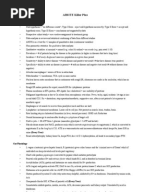Critical Friends Protocol Template
Principal Class Performance and Development. YOUR CRITICAL FRIEND Some basic protocols. A formal critical friend agreement or simply use this template as.

- Title: Critical Friends Feedback Form Author: Lisa Toulon Last modified by: Lisa Toulon Created Date: 5/9/2004 5:29:00 PM Other titles: Critical Friends Feedback Form.
- Aug 31, 2014 This video gives a short overview of the Tuning Protocol. Critical Friends Protocol - Duration: 1:56. Susan Kind 1,326 views.
We appreciated reading Dr. Weimer’s article (March 5, 2012). The solution proposed of asking students to identify three ways to improve their assignment based on instructor feedback is a great idea. We would like to offer a further solution that addresses students’ incorporating instructor feedback. In the online courses at Graceland University Gleazer School of Education M.Ed program, we have a structure in place called “Critical Friends.” It works like this: Students are organized into groups of three or four students, and must submit their weekly assignments to their group prior to submitting them to the instructor. As the excerpt from the weekly participation rubric below outlines, students are expected to give critical feedback to each other as it relates to both content and structure: Critical feedback given to Critical Friends Group provides suggestions for revision or improvement of content and writing. Feedback assists in aligning submitted assignments with Assignment Criteria.

Adherence to graduate writing guidelines is demonstrated in assignments. Candidate was respectful of divergent viewpoints and was positive and professional during all interactions with classmates Candidate met all requirements of Weekly Assignment. Next, students submit their assignment to the instructor for further feedback, which includes both affirmation of meeting the objectives of the assignment and/or suggestions that will assist students to improve their papers. One aspect of our program is that within each eight-week course, students create a portfolio entry comprised of individual assignments that are developed as the class progresses. In week seven, the instructor assesses students’ consistency in incorporating both peer and instructor feedback: Critical Feedback: When given feedback regarding participation, students accept and adjust according to suggestions given by the instructor. Students are willing to accept and revise assignments according to feedback from both the instructor and Critical Friends throughout the course.
Assessment in each course is standardized. Fifty percent of the course grade is drawn from weekly participation and the other 50 percent is applied to the assessment of the final portfolio entry. A student who ignores peer and instructor feedback throughout the course will find their grade greatly reduced. We have observed that the skill of giving peer feedback requires instructor scaffolding and cultivation. At the beginning of each course, instructors post an announcement that addresses participation; explaining what it looks and sounds like.
With regard to giving and receiving feedback, the instructor addresses each criterion referenced on the weekly participation rubric. For example: Critical feedback given to Critical Friends Group provides suggestions for revision or improvement of content and writing. This means that you have looked at the rubric indicators and have made certain that your colleagues have demonstrated the identified objectives. A simple “good job” or “great work” will not suffice here.
You have to ask them questions for clarification, pose alternate means of saying something, or demonstrate how they can meet the criteria of the rubric more fully. Feedback assists in aligning submitted assignments with Assignment Criteria. This means you need to make certain that you do provide comments that are linked to the assignment objectives. Giving critical feedback that is personal, relevant, and challenging — both on a student level and instructor level — has a positive impact on learning outcomes. One of the key questions on the student course evaluation inquires whether the instructor’s feedback provided assistance in improving the quality of assignments. Hence, improving our own feedback skills is a topic that is frequently re-visited in faculty development.
Modeling effective feedback provides good examples for our students to observe and enhances their own peer feedback skills. We are reminded of John Hattie’s words that the most valuable single innovation that enhances student achievement is that students receive “dollops of feedback.” Cultivating a learning environment where receiving critical feedback is invited and well received enhances the level of learning that is experienced in a class. Reference Hattie, J, & Timperley, H.,(2007).
The power of feedback. Review of Educational Research. Debbi Leialoha, Ph.D. Is the associate dean of Graduate Studies in the Gleazer School of Education at Graceland University. Shelly Leialoha, Ph.D.
Critical Friends Protocol List
Is an associate professor in the Gleazer School of Education at Graceland University. Sherry Leialoha-Waipa, Ph.D. Is an assistant professor in the Gleazer School of Education at Graceland University.